Is There Such a Thing as a Normal Woman? Part 2: Mother-blame and Psychological Theory and Research
Is There Such a Thing as a Normal Woman? Part 2: Mother-blame and Psychological Theory and Research
 Paula J. Caplan, Ph.D.
Paula J. Caplan, Ph.D.
In Part 1 of “Is There Such a Thing as a Normal Woman?” (ISEPP Bulletin December 2019), I addressed many of the ways that psychiatric diagnoses are used to pathologize women, demean them, challenge their credibility and motivation and feelings, and deprive them of everything from self-respect to their human rights to their very lives.
Mother-blame1
It doesn’t require a psychiatric diagnostic handbook or even a therapist to pathologize women. The fact that every female either is a mother or can be regarded as a potential mother or at least as mother-like, can be assumed to be hormonally, cognitively, and emotionally preprogrammed to be mother-like, is often all that is needed to cast women as inadequate, inferior, harmful, even grotesque. I will focus primarily in this section on women who have in fact had children, but it is important to keep in mind that nearly everything negative that is attributed to mothers is often also attributed to women who are not mothers, solely because the latter are also female. In other words, what is often considered the essence of femaleness includes inclinations or predispositions toward behaving in motherly ways, and then most of what is associated with that essence is considered negative. Sometimes the lengths to which people go to pathologize anything associated with mothers is astounding.
Early in my career as a psychologist, I worked at a clinic where we had interdisciplinary teams whose members took turns conducting assessments of people referred by the courts. Each team would sometimes watch one of its members interview a family that included a teenager who had been in trouble with the law, and after the interview, the team would discuss what had transpired. I had two young children at the time, which probably led me to observe the following pattern: If a mother sat right next to the teen who was the “identified patient,” the team members would conclude that her having sat next to her child indicated that she was controlling, intrusive, and/or smothering. If a mother did not sit next to the teen who was the “identified patient,” they construed that as evidence that she was cold and rejecting – and if the teen was male, that the mother was castrating. “Hmm,” I asked myself, “where does a good mother sit? On the ceiling?”
I broached the subject of this constant pathologizing of mothers with the psychiatrist who was my team leader (it was always a psychiatrist who was the team leader), and he informed me that obviously, my reason for thinking this was that I was a mother. Did he mean by this that due to being a mother, I was understandably observant about how mothers were being treated? No. He meant that I was distorting the truth because I was a mother.
Mother-blame Research
This was one of those times when I was glad I had earned a research degree. Ian Hall-McCorquodale and I decided to survey clinical journals and see if we found much mother-blame. We developed 63 categories related to mother-blame and classified each of 125 articles according to each category. We found overwhelmingly that mothers were blamed for virtually anything, in fact for 72 different kinds of problems in their children, ranging from bedwetting to “schizophrenia,” from inability to deal with color blindness to aggressive behavior, from learning problems to “homicidal transsexualism.”2 In one study, the authors said they wanted to find out whether the fathers’ having been prisoners of war affected their children. They reported that the children indeed had some emotional problems, but here was their explanation of those problems: The fathers were often emotionally distant from their family members, even when physically present, and this upset the mothers and thus interfered with their parenting, which is what harmed the children. Although our research was done in the mid-1980s, mothers are still more likely to be blamed, and this is due to the history of mother-blame among clinicians; the continuing tendency for mothers to do more of the child care than fathers – and thus to be the ones the therapist sees when the child has difficulties, so they are available for study and thus for pathologizing; and the ongoing mother-blame and misogyny in general in society.
The Mother Myths3
That research prompted me to consider mother-blame more broadly, and in the book I wrote about it and how it interferes with mother-daughter relationships (much of which applies to mother-son relationships as well), I recounted the Mother Myths that are widespread and that seep into all of us by osmosis as well as by explicit statements and that pervade the zeitgeist simultaneously. These myths I divided into two groups; Perfect Mother and Bad Mother.
What I call the Perfect Mother myths are those that set standards so high that no human being could ever meet them, thus paving the way for all mothers to be deemed inadequate if not simply bad. These are: (1)The measure of a good mother is a “perfect” daughter; (2)Mothers are endless founts of nurturance; (3)Mothers naturally know how to raise children; and (4)Mothers (and “good” daughters) don’t get angry.
The Bad Mother myths encourage us to take anything a mother might do, including what ought to be considered good things, and transform them into “proof” of mothers’ inferiority or harmfulness. They are: (5)Mothers are inferior to fathers; (6)Only the experts know how to raise children; (7)Mothers (and daughters) are bottomless pits of neediness; (8)Mother-daughter closeness is unhealthy; (9)Women’s power is dangerous; and (10)Both stay-at-home mothers and mothers with paid jobs are bad mothers.
A look at the two sets of myths reveals two pairs of myths that would seem to cancel each other out. These are: (a)That mothers are endlessly nurturant (Good Mother myth) and that mothers are bottomless pits of neediness (Bad Mother myth),though based on simple physics principles of vectors, one can hardly be constantly giving while constantly taking and (b)That mothers naturally know all they need to know about raising happy, healthy children (Good Mother myth) and that mothers need experts’ advice in order to raise happy, healthy children (Bad Mother myth). How can these contradictory myths exist simultaneously?
Consider this: In any power structure, those who have the most power usually want to maintain their position. Choosing scapegoats to whom to attribute any problems that might arise is one way to keep their power, because they can say, “Don’t blame me! It’s their fault.” Mothers have been a convenient group to scapegoat, not only because they have traditionally been held responsible for everything bad that happens to their children but also because they have not tended to come together to advocate for mothers, to try to persuade people to look in a more balanced way at the wide variety of potential causes of their children’s – and thus society’s – problems.
For those in power, it is dangerous if scapegoats do things that are obviously good. So beliefs arise – sometimes consciously and purposefully created – that, in essence, provide a myth for every occasion; thus, no matter what a mother does, there is a myth that makes it easy to cast it as something bad. Thus, for instance, if she is a caring, loving mother whose adult offspring demeans or distances her, it’s easy to avoid concluding that the offspring was in the wrong by claiming that the mother loves being a martyr (this is a form of the myth of women’s masochism that was addressed in my previous essay4).
An example of the bizarre transformation of even good behavior into proof of bad mothering is the myth that "Mother-daughter closeness is sick." During my book tour for Don't Blame Mother, women media interviewers often got me alone and confessed, "I talk to my mother every day." When I asked how they felt after those talks with their mothers, they usually said something like, "Great! She's warm and funny, and we trade advice and stories and really enjoy our conversations." I would then ask, "Do you have a best friend or an intimate partner" "Yes." "Do you talk to them every day?" "Yes." "Are you embarrassed about that?" "No!" "Then why," I would ask, "did you confess to me that you talk to your mother every day? Why did you seem embarrassed about your regular conversations with her?" The answer was usually, "Because I know that means I am dependent and immature." Daughters who had been in therapy often said, "It means we are enmeshed or symbiotically fused." Notice how, simply by replacing a mother-offspring relationship for any other relationship, we introduce pathology.
In light of all this, it is remarkable that mothers ever manage to do a decent job of raising children, since nearly every mother I’ve ever heard from has told me some version of this: “I feel like nothing I do is ever right. There’s always like a little bird on my shoulder telling me I am doing too much of this or not enough of that.”
Mother-blame as Hate Speech5
Many years after I started noticing the pervasiveness and poisonousness of mother-blame, it struck me that mother-blame often is hate speech. Consider that hate speech is aimed at a person because of their membership in a particular group and is intended to silence, intimidate, shame, and/or terrify. All a stand-up comedian has to do is say, “Let me tell you about my mother,” eyes will roll, and many people will laugh. If the phrase were, “Let me tell you about my father,” can you imagine the same kind of response?
Mother-blame in the Courts
In the courts, serious problems emerge from the existence of the Mother Myths combined with the misogynist psychiatric diagnosis enterprise addressed in my previous essay6. Having served as an expert witness in child custody cases in which the mother alleges that the children’s father has abused them sexually or in other physical ways are likely to be lost by the mother because – though this may sound unbelievable – the very fact that she has reported his abuse is construed as proof that she is “mentally ill” (often, the diagnosis of “Munchausen’s Syndrome by Proxy” is used or others are applied). Thus, her attempt to protect her children is used to transfer custody to the abuser. All this is done in order to allow to hold sway the notion that fathers would never do terrible things to their children.
In one case in which I was an expert witness, there was strong evidence that the father had abused the children, and although the mother was the farthest thing from vengeful, she wanted to protect her children from further mistreatment. In court, the judge transferred their custody from her to their abuser. How could this happen? In part, it was because their guardian ad litem, who is supposed to speak for the children or with regard to their welfare, had told me on the phone that he could not believe what the mother claimed was true, because he himself was a father and would never have done anything like that to his kids. In addition, after I testified that I had conducted a psychological evaluation of the mother and found no indication that she had emotional problems – other than, of course, fear for her daughters’ welfare – and no sign whatsoever that she was inclined to lie or distort the truth, the father’s lawyer began to cross-examine me. Rather than challenging any of my professional, academic, or clinical qualifications, he simply asked, “Dr. Caplan, isn’t it true that you are a feminist?” I answered truthfully that that was true. I had a sinking feeling right then that the mother would lose custody, given that that judge was then going to be likely to discount everything I said.
Lawyers representing abusive parents, who are overwhelmingly likely to be male, often grasp at any chance to portray the protective mother as “mentally ill.” Decades ago, Richard Gardner made up what was presented as a psychiatric disorder he called “Parental Alienation Syndrome (PAS).”7 Disproportionately used, with his endorsement of the practice, to use a mother’s report that her child was being abused by its father to “prove” that the mother was fabricating in order to hurt the father and turn the child against him, PAS has come to be used frequently in the courts. What frequently happens, then, is that the judge transfers custody of the children to the abusive father, on the grounds that the allegations of his abuse were surely false and put forward by the mother for the purpose of turning the children against their father. I have seen decisions that claimed that the father was clearly the better parent, because he had no qualms about allowing his children to visit with their mother, were he to have custody, whereas the mother had put up roadblocks about their visits with him.
Some jurisdictions have prohibited use of PAS, a good thing, given that it has no scientific basis and is used in such biased ways. It is poignant, however, that many a mother in such situations have been so upset that their offspring’s abusive father has won custody and turned them against her, that they have chosen to accuse the father of PAS, thereby helping to perpetuate the use of this unscientific, profoundly misogynist term. I urge mothers in such situations to use different words instead of “PAS,” such as saying that the father is turning the children against them.
A case in Canada that drew extensive media coverage illustrates the ways that clinicians who conduct psychological evaluations in child custody cases can base their recommendations on deeply sex-biased and unfounded principles. A couple with four children was divorcing. The mother had been the ideal stay-at-home mother, and the father had financially supported the family but been far less emotionally involved with the children. Over time, the mother and father each connected with a new partner, and a court battle for child custody began. A white, male psychologist was brought in to conduct evaluations of the parties and make a custody recommendation. Hard though it may be to believe – and keep in mind that this is by no means the most extreme example of biased evaluations that I have seen – his report included the following:
(1) The father admitted the truth of the mother’s allegation that he had physically attacked her in front of witnesses, but no doubt he attacked her because she must be a masochist who somehow got him to do it.
(2) The psychologist had been about to recommend, based on the history of who had been the primary parent, that custody of all four children go to the mother, but then he learned that she was pregnant and that her partner, an aboriginal Canadian man, was the father. Stating that the more children one has, the less love one has to give them, he said that for that reason, he was recommending that two of the four children live with the father and two with the mother. It’s noteworthy that neither parent had ever suggesting splitting up the children, and the four had very close, loving relationships with each other.
The psychologist’s “reasoning” in (1) was clearly based on the unfounded and deeply misogynist myth that women enjoy suffering.8 As for what he said in (2), there was of course no foundation for that claim; it is hard to imagine that he would have said the same thing if the father and his new partner were expecting more children, since men continue to be less often expected to do the lion’s share of childcare; and it is possible that some racism about the stepfather’s race/ethnicity may have entered into the equation.
Psychological theories about personality and interpersonal interactions tend to fall roughly into two categories: For one, there is at least some scientific basis, and for the other, there is no scientific support. A clinician conducting a custody – or other psychological – evaluation thus can choose to justify conclusions on the basis of empirical observations or of a theory falling into one or the other group. Clearly, the psychologist in the above example chose to use unfounded theories, and where there is no scientific basis for judgments, every kind of bias easily swooshes in.
In another such example, a heterosexual couple with two children had divorced. The mother had always been the primary caregiver for the kids and was in fact home-schooling them, based on a decision the parents had made jointly. She went to great lengths to ensure that the children would have lots of extracurricular activities with friends. When the father acquired a new girlfriend well after the couple split up, he sued for custody. The public school system representative had told the mother that her teaching of one of the children was inadequate, and she promised to do exactly what they wanted her to do. However, the father said the children should instead be sent to school. The judge transferred custody from the mother to the father on the grounds that the mother’s decision to persist in home-schooling her children revealed that she was overly involved with them. I have never seen anything like that alleged about a father. It’s not hard to imagine that if the parents’ roles had been reversed, the father would have been praised by the judge for devoting so much time to home-schooling the kids and for his determination to improve in doing so.
Mothers and Other Women in the Military9
Increasingly these days, women serve in the military. Mothers whom the military requires to leave their children behind during periods of their service of course miss them terribly and often feel guilty and ashamed for being away from them, since a good mother is expected to be constantly on duty. When they are upset, they may seek or be ordered to seek help from a military therapist, and the stories of such therapists diagnosing mothers as mentally ill are legion. Then, as in civilian life, therapists are very likely to prescribe psychiatric drugs for these women, and though there is some disagreement about this, in at least some cases, the women are in danger of being punished for refusing to follow an order if they decline the drugs. When the mothers return home to their children, there are often understandable problems with readjustment on the parts of all family members, and if there is a separation or divorce and a child custody dispute, the fact that the woman had been given a psychiatric label tends to be used as reason to limit her access to and control over her children.
Something similar happens to women even if they are not mothers but are in the military, where rates of sexual assault against women are high, as is retaliation for those who report the assaults.10 Once again, the deeply human upset they experience because of the attack and often the fear of or dealing with retaliation lead them to see a therapist, and the terrible sequence described above occurs. When they leave the military or come home on leave, they are subject to all of the kinds of harm that result from getting a psychiatric label that were described in Part 1 of this essay.11
A Brief Note about Psychological Theories and Research
Space limitations make necessary just the briefest description of some aspects of sexism in psychological theories and research.
Language, Research, and Theories of Behavior and Emotions
Dr. Jeri Dawn Wine and her colleagues were pioneers of critical thinking about published research about alleged sex differences,12 and they highlighted the crucial role that language plays in the interpretation of behavior as positive or negative. Working at a time when it was widely believed (even more than today) that men were innately more assertive than women and women more dependent than men, they carefully studied the definitions of assertiveness and dependency used in the studies. With respect to assertiveness, they found that the studies fell into two categories: In one, the behavior examined was the tendency to interrupt, give monosyllabic responses, and so on, and in the other, the behavior examined was the statement of one’s beliefs or feelings and sticking to it. Men did more of the former, which often amounted to aggressiveness and rudeness, than did women, and women did as much as or a bit more of the latter than did the men. The latter of course would more reasonably be called “assertiveness.” Results of the two kinds of studies tended to be lumped together, and there were more of the former, so it was concluded that men were more assertiveness than women, and often what was also concluded was that that difference was innate. This was a powerful way to cast women as inadequate, even not fit for the public world including the workplace.
Similarly, in their analysis of studies of “dependency,”13 they found that what was often called dependency – and said to be more common in women than in men – actually included such things as attention to and concern with the feelings of others, listening and responding respectfully, smiling, having positive and encouraging interactions with others, and accurately sending and interpreting emotion-related messages. Calling such kinds of behavior “dependency” and noting that they were more frequent in women was another major way of casting women as deficient, even childlike.
In my son’s and my simply written, short textbook called Thinking Critically about Research on Sex and Gender, we examine in brief chapters a wide range of research, from studies of the brain and cognition (including math, spatial, and verbal abilities) through emotions and interpersonal interactions.14 For each topic, we illustrate how traditional assumptions about sex and gender differences have led to seriously biased definitions, research hypotheses and designs, data analyses, and interpretations of findings. Nearly always, outcomes have been some form or other of pathologizing or demeaning of girls and women.
Pathologizing through Theorizing
To address another vast and important topic briefly, I begin by considering that the traditional theories of human development were based on the notion that the aim of growth and maturity was increasing separateness, individuation, and development of “the self.” Beginning in the 1980s and early 1990s, a number of women created work that ought to revolutionize the entire field. Psychologist Carol Gilligan15; psychiatrist Jean Baker Miller, and the Wellesley College Stone Center group that included Miller and psychologists Judith Jordan, Alexandra Kaplan, Irene Stiver, and Janet Surrey16; and social worker Rachel Josefowitz Siegel17 in various ways drew attention to the strengths that girls and women were socialized to have, leading to the recognition that, as I once heard Miller say in a lecture (but put here in my own words):
"Although it makes sense that – even from the evolutionary standpoint of thinking about who survives – it is important for humans to develop capacities to function on their own, there are a parallel track and aim of human development that is at least as important, and that is to develop the capacity to express and identify a range of emotions and the abilities to form relationships with others and repair problems in those relationships. This parallel track also makes sense from the standpoint of how they enhance the likelihood of survival."
That kind of approach provides a perspective from which it is harder to pathologize and dismiss girls and women and our strengths and from which it is easier to understand the importance of teaching people regardless of sex the skills involving connections with and consideration of others.
1 Much of this section is adapted from Caplan, Paula J. (2000). THE NEW Don't Blame Mother: Mending the Mother-Daughter Relationship. Routledge.
2 Caplan, Paula J., & Hall-McCorquodale, Ian. (1985). Mother-blaming in major clinical journals. American Journal of Orthopsychiatry, 55, 345‑353; and Caplan, Paula J. & Hall-McCorquodale, Ian. (1985). The scapegoating of mothers: A call for change. American Journal of Orthopsychiatry, 55, 610‑613.
3 Much of this section is adapted from Caplan, Paula J. (2000). THE NEW Don't Blame Mother: Mending the Mother-Daughter Relationship. Routledge.
4 Caplan, Paula J. (2019). Is There Such a Thing as a Normal Woman? Part 1: Sexism in Psychiatric Diagnosis. ISEP Bulletin. December 2019.
5 Caplan, Paula J. (2007). Mocking Mom: Joke or hate speech? RejectedLettersToTheEditor.com, Vol. 1, No. 4. http://rejectedletterstotheeditor.com/ June 23.
6 Ibid.
7 I extensively review and critique the concept and use of “Parental Alienation Syndrome” in: Caplan, Paula J. (2004). What is it that’s being called “Parental Alienation Syndrome”? In Caplan, Paula J., & Cosgrove, L. (Eds.) Bias in Psychiatric Diagnosis, pp.61-7.. Rowman and Littlefield.
8 Caplan, Paula J. (2005) The Myth of Women’s Masochism (latest edition with new preface). iUniverse.
9 Caplan, Paula J. (2012). Mothers and the military: What it’s like and how it needs to be. What do mothers need? Motherhood activists and scholars speak out on maternal empowerment for the 21st century. Andrea O’Reilly (Ed.). Bradford, Ontario: Demeter Press, pp. 97-106.
10 Caplan, Paula J. (2013). Sexual trauma in the military workplace: Needed changes in policies and procedures. Women’s Policy Journal of Harvard 10, 10-21; and Caplan, Paula J. (1994). They Say You're Crazy: How the World's Most Powerful Psychiatrists Decide Who's Normal. Addison Wesley.
11 Caplan (2019), op. cit.
12 Smye, M.D.; Wine, J.D.; & Moses,B. (1980). Sex differences in assertiveness: Implications for research and treatment. In Stark-Adamec, C. (Ed.), Sex Roles: Origins, Influences, and Implications for Women, pp. 164-75. Eden Press.
13 Wine, J.D.; Moses, B.; & Smye, M.D. (1980). Female superiority in sex-difference competence comparisons: A review of the literature. In Stark-Adamec, C. (Ed.), Sex Roles: Origins, Influences, and Implications for Women, pp.148-63. Eden Press.
14 Caplan, Paula J., & Caplan, Jeremy B. (2009) Thinking Critically about Research on Sex and Gender. (Third edition). Pearson.
15 Gilligan, Carol. (1982). In a Different Voice: Psychological Theory and Women’s Development. Harvard University Press.
16 Many of the Wellesley College Stone Center papers appear in these two collections: Jordan, J.; Kaplan, A.; Miller, J.B.; Stiver, I.; & Surrey, J. (Eds.) (1991). Women’s Growth In Connection. Guilford Press; and Jordan, J. (Ed.) (1997). Women’s Growth in Diversity. Guilford Press. See also Miller, Jean Baker. (1976). Toward a New Psychology of Women. Beacon Press.
17 Rachel Josefowitz Siegel’s crucially important papers include but are not limited to: Siegel, R.J. (1988). Women’s “dependency” in a male-centered value system: Gender-based values regarding dependency and independence. Women and Therapy 7, 113-123; Siegel, R.J. (1986). Anti-semitism and sexism in stereotypes of Jewish women. In Howard, D. (Ed.) A Guide to Dynamics of Feminist Therapy. Harrington Park Press; Siegel, R.J. (1990). Old women as mother figures. In Knowles, J.P., & Cole, E. (Eds.), Woman-defined Motherhood. Harrington Park Press; and Siegel, R.J. (1999). Silencing the voices of older women. In Tavares, J. (Ed.), Aging in a Gendered World: Issues and Identity for Women, INSTRAW/UN Publications.

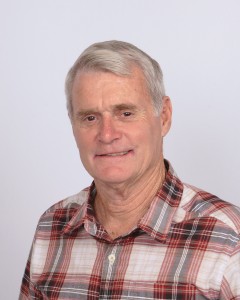 Ty Colbert, Ph.D.
Ty Colbert, Ph.D.
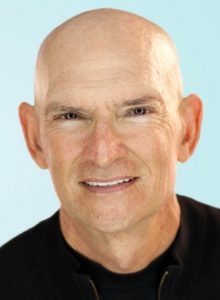 Howard Glasser
Howard Glasser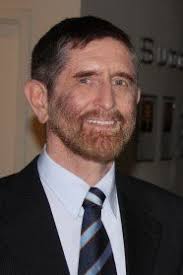 Niall McLaren, MBBS, FRANZCP
Niall McLaren, MBBS, FRANZCP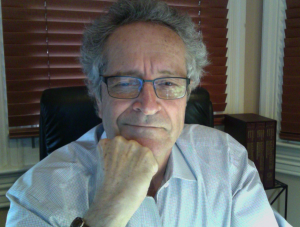 The “Sorry” State of American Health Practice
The “Sorry” State of American Health Practice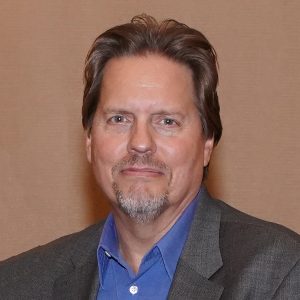 Don't Be Fooled By Fake News
Don't Be Fooled By Fake News